Every online store wants to increase traffic and conversions. But even after you’ve put together a basic strategy it can still be challenging to decide which marketing tactics you should try.
Here’s a list of effective marketing tactics and ecommerce tools, along with ideas on how to use them. The ideas themselves run the gamut from straightforward acquisition to generating more repeat purchases from the customer base you already have.
Try to implement one of them every day for the next few weeks. On the last day of your sprint, take stock and figure out which marketing efforts worked best to increase traffic and drive new sales.
What is ecommerce marketing?
Ecommerce marketing is the practice of using promotional tactics to drive traffic to your online store, converting that traffic into paying customers, and retaining those customers post-purchase.
Your ecommerce marketing strategy should be made up of marketing tactics both on and off your website. A sound marketing strategy can help you build brand awareness, drive customer loyalty, and increase online sales.
Promote your online store by using ecommerce marketing tools for business as a whole or to drive more sales for specific products.
26 ecommerce marketing ideas to increase sales
- Invest in SEO
- Run an influencer marketing campaign
- Sell on marketplaces
- Create a TikTok marketing strategy
- Run PPC campaigns
- Upsell your products
- Integrate Instagram
- Reduce abandoned carts
- Send text message campaigns
- Capture more email subscribers
- Improve your email campaigns
- Make it easy for your customers to get what they want
- Engage online store visitors with live chat
- Anticipate future sales
- Start a content marketing program
- Embrace personalization
- Leverage user-generated content
- Think local
- Optimize your product pages
- Optimize for mobile
- Reward loyal customers
- Sell product bundles
- Offer interactive product visuals
- Start video marketing
- Run an affiliate marketing program
- Host webinars or workshops
1. Invest in SEO (search engine optimization)
Ecommerce SEO refers to the search engine optimization of an online store. The goal is to get your product pages among the highest results on search engines like Google, Bing, and Yahoo. This brings more organic (non-paid and free) traffic to your website. Backlinko found that the highest-ranking organic result is 10 times more likely to receive a click compared to the page 10th on the list.
Invest in SEO by:
- Performing keyword research and including keywords in your page URLs, product descriptions, and blog posts
- Optimizing your website structure and creating a good user experience
- Building backlinks from other reputable websites
Follow best practices and you can show up for popular search terms related to your products. The screenshot below shows Everyday Yoga ranking on page one in Google for the term “women’s yoga pants,” which receives more than 49,500 searches per month.

2. Run an influencer marketing campaign
Influencer marketing is a smart way to accelerate your ecommerce business online. Working with social media stars can help you reach new audiences, build brand awareness, and generate sales.
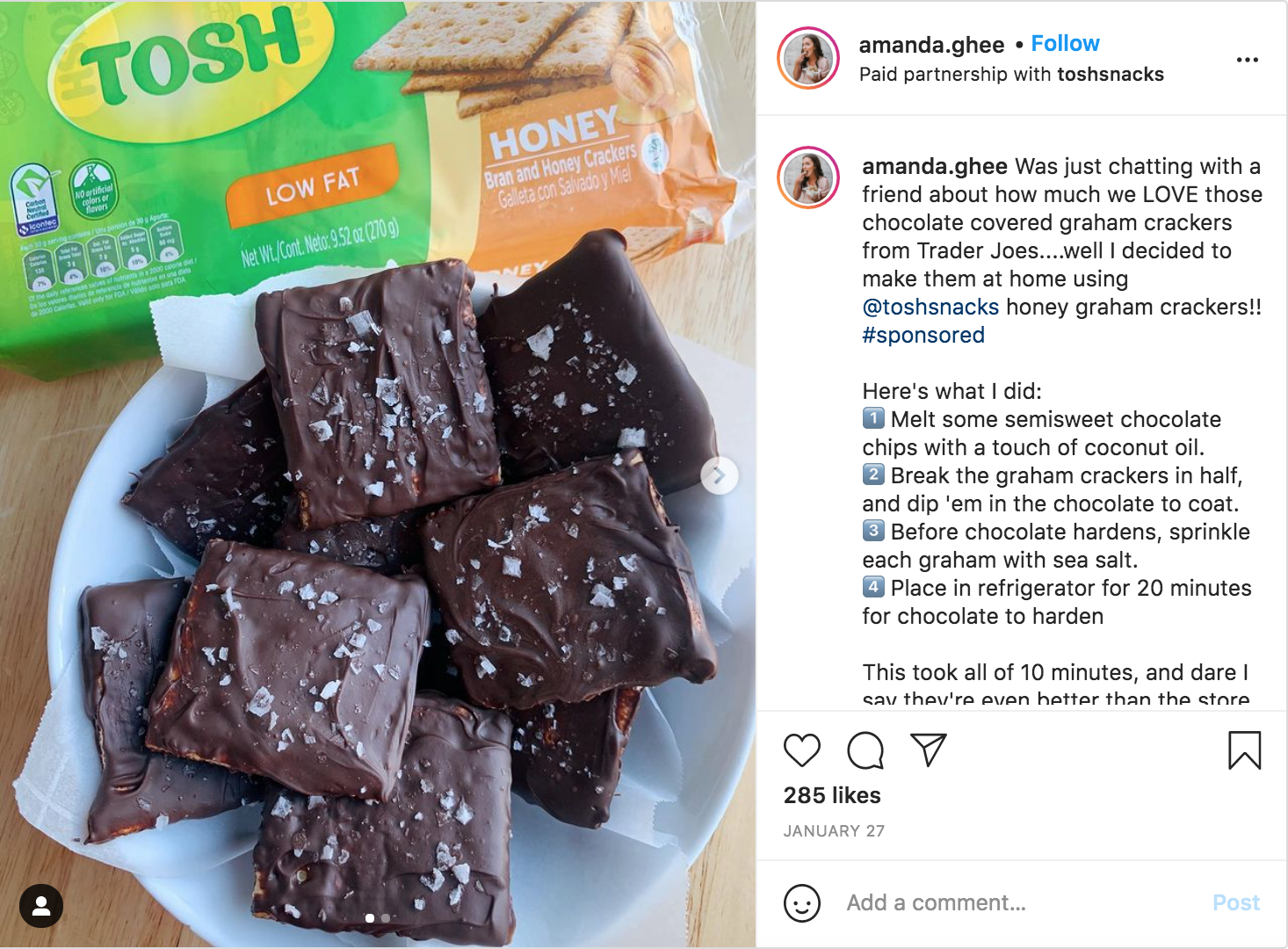
A recent benchmark report by IMH revealed that 85% of marketers find influencer marketing effective. TikTok is the most popular channel, with 69% of brands using it. Other marketing channels include:
- YouTube
- Snapchat
- Twitch
Influencer marketing is a highly effective tool for identifying relevant customers. How often have you seen an influencer’s Instagram post, liked what they were wearing, and wanted to buy it? Promoting products via influencers shortens up the sales cycle. With more and more social commerce features on Instagram and TikTok, shoppers can buy directly from the platform.
3. Sell on marketplaces
Marketplaces like Amazon and eBay, which reach millions of people around the world, help people discover your brand. Some customers are die-hard marketplace shoppers and there is a higher chance they’ll buy something from you on a channel they know. However, they do come with hefty selling fees and other caveats to consider.
That’s why, for ecommerce brands, it’s recommended to use marketplaces to complement your branded store. You don’t need to list all your products on a marketplace, just some of the bestsellers. Create compelling listings that show off your brand and add branded packaging inserts to marketplace orders that encourage people to shop directly from your website.
📚 Read more: 20 Online Selling Sites and Marketplaces to Sell Your Stuff
4. Create a TikTok marketing strategy
Using TikTok for business should be part of every ecommerce entrepreneur’s marketing plan.
Businesses thrive on TikTok by publishing genuine content. Raw and authentic videos tend to get more exposure and engagement than highly edited content. That’s what makes TikTok unique when it comes to strengthening relationships with an audience.
TikTok also has a few benefits that make it different:
- The algorithm prioritizes content from creators you’ve never seen before.
- The user interface is designed to keep people in the app longer than Instagram or Facebook.
- Its discovery engine helps videos go viral, no matter your follower count.
There is also a place for every niche in the TikTok space, including fitness, goth, NYC, and gay TikTok. The platform also offers livestream shopping and advertising to help promote your products.
💡 Learn how to create your TikTok marketing strategy
5. Run PPC (pay-per-click) campaigns
PPC advertising is the main online advertising model for small and large businesses. It’s driven by data, easy to scale, and offers an ROI of $8 for every $1 spent, according to Google. PPC ads often target online ad space in search engines, social media platforms, or websites. These ads work well for ecommerce brands because they target ready-to-buy shoppers and can lead to higher sales than organic marketing.
The two most popular platforms to run PPC ads on are Facebook and Google. Google shopping ads are popular for ecommerce brands. You’ve seen these ads before. When you search for “men’s boots,” you’ll notice an ad that shows detailed information about various products related to your search.
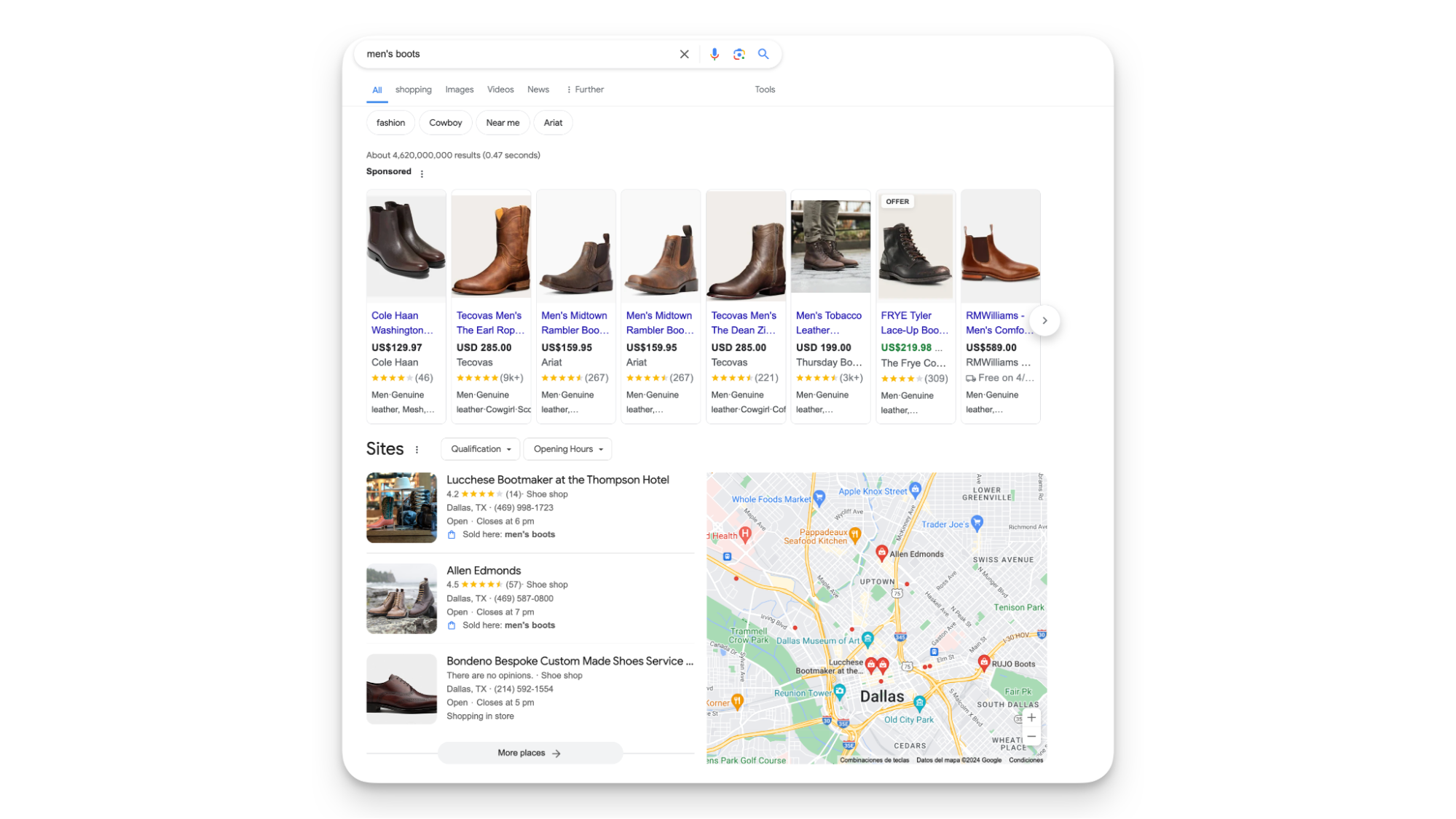
Facebook ads, on the other hand, run on Facebook and Instagram. You can also target specific personas and leverage a variety of ad formats to promote your products.
The big benefit of PPC ads is how targeted you can get with campaigns. You can choose exactly who you’ll advertise to and the type of ad that’s shown. You can also run retargeting ads to people who’ve viewed specific landing pages or previous ads, and encourage them to shop on your site again.
Say you’re running a shoe store and you get a new line of boots in—you can create ads for those new boots. Maybe the boots are rubber and water-resistant. You can create a group of ads that target keywords like “best rain boots.” This means your ads are showing up in front of people who are looking to buy what you’re advertising.
6. Upsell your products
Most of us have heard some variation of the famous, “Would you like to Super Size your order?” It’s an example of upselling, or the approach of selling a slightly more premium product than the one the customer was originally considering.
For many ecommerce businesses, upselling and cross-selling can be more effective than acquiring a net new customer. Sometimes your customers don’t know a premium product is available, or they may simply need more evidence to understand how an upgrade (or package) is a better fit for their needs.
For example, is one of your product models made of slightly better leather? Or does one carry a special component that’s handmade? Make sure to emphasize the difference and ask, in the right places, if the customer might want to upgrade.
💡 Use the ReConvert Shopify App to upsell and cross-sell products in your store.
7. Integrate Instagram
If you take compelling photos, use hashtags strategically, and post at the right times, then you’re well on your way to building a large Instagram following who are interested in your products. The key to mastering your organic Instagram presence is engagement with your followers.
Try running contests or going behind the scenes to showcase your product development process. You can also pay to play on Instagram. For ecommerce marketing, adding products to your Instagram posts, Stories, and Reels gives your followers a direct path to purchase, which is key for increasing your online sales.
Integrate your Instagram Shop with Shopify to sync your product catalog and manage your orders from your Shopify admin.
8. Reduce abandoned carts
You’re losing money every time a visitor abandons their cart without purchasing. According to the Baymard Institute, 70.19% of shopping carts are abandoned.
It’s worth directly addressing as many hesitations as you can, because some shoppers who abandoned their carts could have been reminded to complete their purchase. Perhaps they would have been persuaded with a discount or free shipping, for example.
One simple and effective ecommerce marketing idea to reduce the frequency of cart abandonment is an email recovery campaign, which can convince visitors to return and complete their purchase. Alex Mill, for example, uses a 15%-off discount to encourage cart abandoners to come back and finish the purchase.
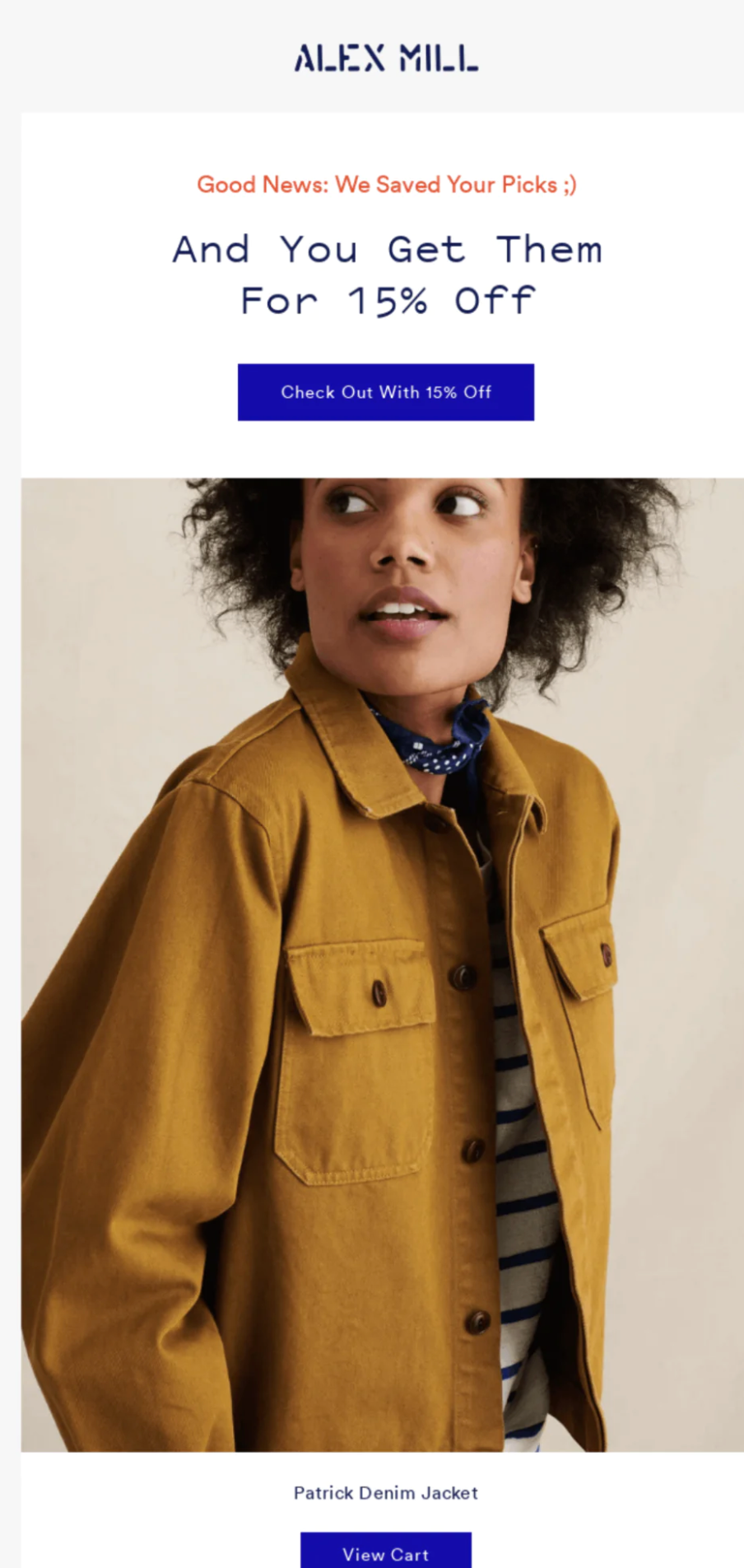
Craft an email that entices your visitors to return to their carts by reminding them of what they considered purchasing in the first place, and why.
9. Send text message campaigns
Sending promotional SMS messages to existing and prospective customers is known as SMS marketing. Messages are intended to inform shoppers about special offers, promotions, updates, alerts, and product information.
Bushbalm, for example, uses SMS to send flash sale messages to customers on its list.
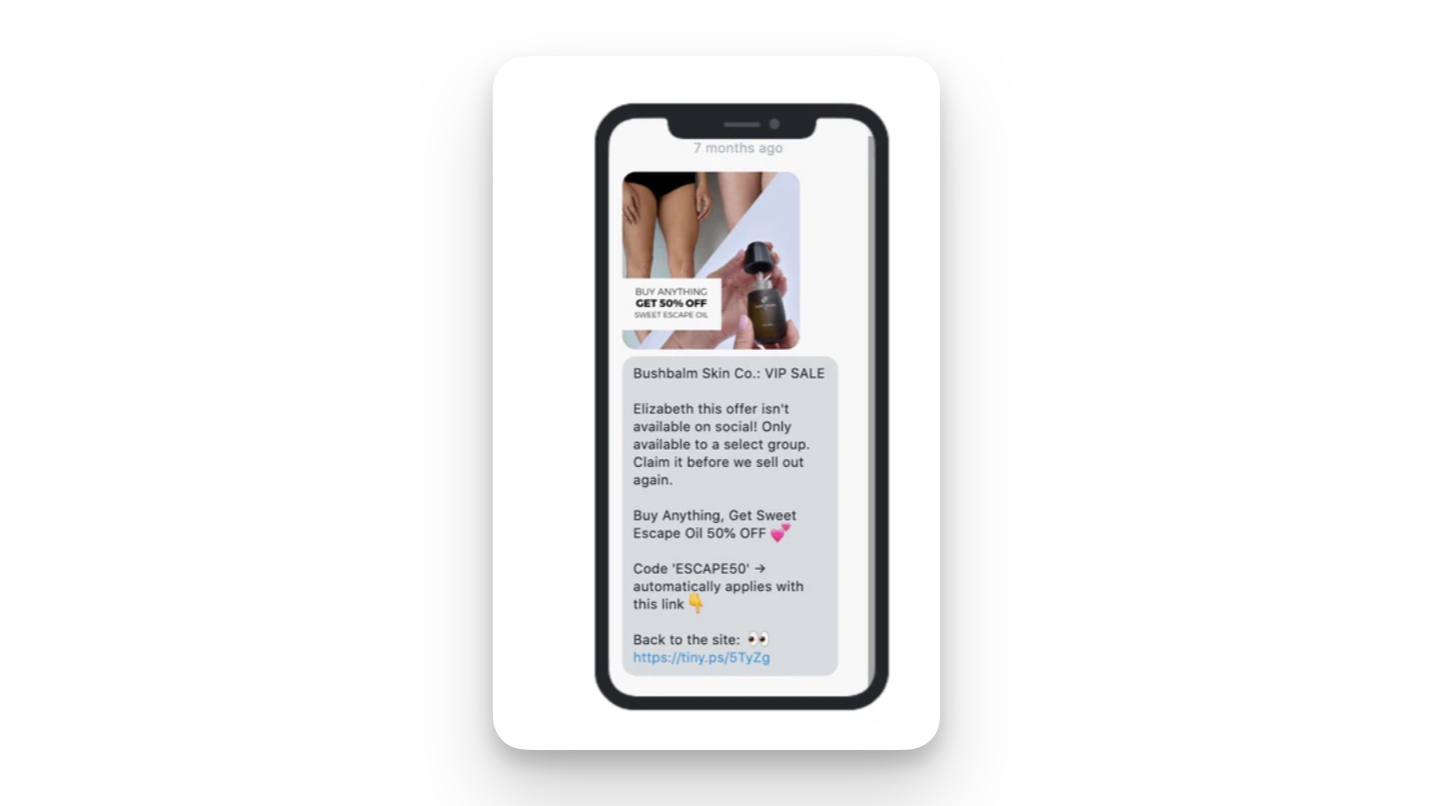
If you run an ecommerce store, you can use SMS marketing for:
- Abandoned cart recovery
- Cross-selling and upselling
- Sales promotions
- Exclusive offers
- Reviews
- Customer support
Top Shopify apps you can use to start SMS marketing today are:
📚 Read more: A Beginner’s Guide to SMS Marketing: Examples, Best Practices, and Tips
10. Capture more email subscribers
Dollar for dollar, email marketing is one of the most effective channels at your disposal for making sales and generating repeat customers.
To get started with email marketing, actively promote your newsletter, blog, and any other email capture efforts to get as many subscribers as you can. Take a look at Huckberry, which makes signing up for its email list the central focus when you visit its site.
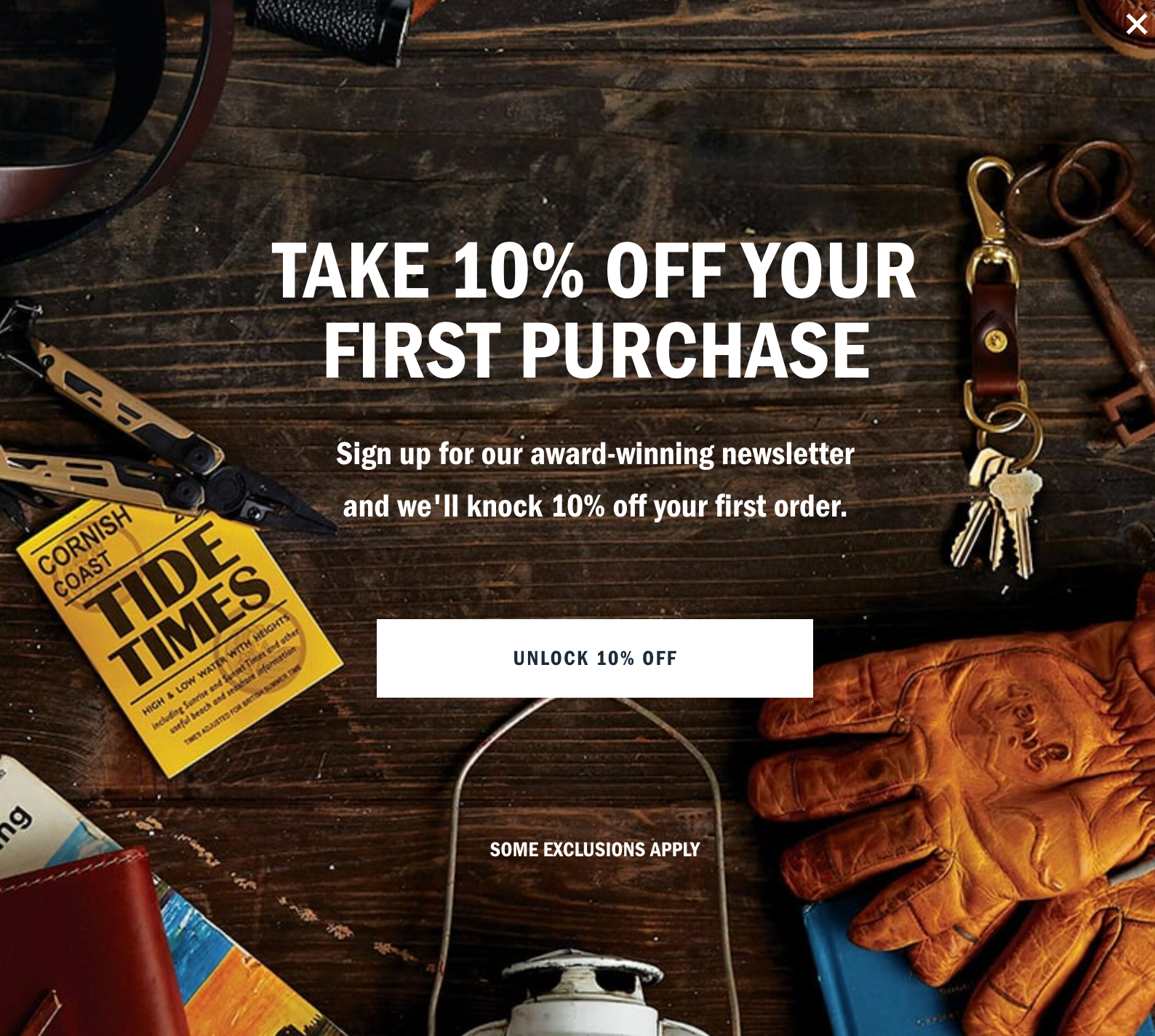
11. Improve your email campaigns
It’s not enough to simply capture email addresses. You then need to send regular, valuable emails for the channel to be an effective ecommerce marketing activity.
There are many occasions that are perfect for sending emails your subscribers will actually appreciate:
- Send a welcome email as soon as a customer makes a purchase.
- Provide exclusive promo codes and free gifts.
- Send regular newsletters to alert subscribers of new discount offers, product tips, and, when appropriate, company news.
- Share relevant content to help customers get the most out of their recently purchased items.
- Run a BOGO (buy one, get one) campaign in time for the holidays to promote self-gifting during the season, too.
- Thank your highest-value customers. Send a personal note expressing your appreciation for their business.
- Solicit feedback. If someone visits your site but doesn’t make a purchase, ask about their experience and how you can improve it.
Take a look at this simple email from Uncommon Goods. For Father’s Day, it sent a last-minute email to remind subscribers of the occasion and to provide a service for the procrastinators on its list. The subject read, “The Gift that Will Save Father’s Day.”

12. Make it easy for your customers to get what they want
If your store is poorly designed, then you’re losing customers. But what exactly does a poorly designed store look like?
Besides appearing untrustworthy, the store could be suffering from some combination of the following: lacking a clear value proposition, using a hard-to-read font, or having a confusing navigation.
Even when you’ve improved the dimensions above, you could still be making a few design mistakes. Are you properly segmenting your products or are you putting too many products on a single page? Have you figured out the right balance between text and visuals?
These are just a few of the many things you should consider. If your theme isn’t converting well, consider some of the other great themes available on Shopify.
There are many examples of beautiful ecommerce websites, but consider Outdoor Voices in particular. Take a look at how clearly products are categorized for shoppers. You can easily find any product category in the menu, or use the search function if you have a specific product in mind.

13. Engage online store visitors with live chat
There are other high-impact ways to engage with site visitors and customers outside of email. For example, you could use live chat to engage with shoppers on your site.
Many live chat tools let you target browsers on certain pages after they’ve been on your site for a certain length of time, or even after they’ve arrived on your site through an email newsletter. Live chat also enables you to have direct conversations with your customers so you can answer and address concerns right when they’re planning to buy.
14. Anticipate future sales
If you have the ability to expand your product line, then you should evaluate market demand and see if it’s worth the cost. You can do that through a variety of approaches: keyword research, geographic validation, social media trends, etc. One more creative way to test out your market? Pre-sell items to see how many people place orders.
If you’re trying to decide which of three to-be-released products to sell, for example, create pages for all of them, making sure to use quality product photography and compelling copy for each one. Then list them as “out of stock” and see which product gets the most attention in terms of back-in-stock notification requests. That’s the one to sell.
💡Use the Back in Stock Shopify app to avoid lost sales from sold out products
15. Start a content marketing program
You should consider blogging regularly to connect with customers and to rank better in search engine results. If you’re already creating content, consider actively featuring your blog on your online store.
Don’t forget, there are more ways to take advantage of content marketing than simply blogging:
- Start a podcast to feature your expertise or build a stronger community.
- Guest post on other websites and blogs to build awareness and generate backlinks, which also help with SEO.
- Create long-form content and guides to help customers use your products more effectively.
16. Embrace personalization
Personalization is another effective marketing tactic to drive online sales. Using behavioral data, personalized experiences are served to the visitor, according to their past actions and preferences.
You can also account for location in personalization to create an experience catered to where your customers are in the world. Someone in southern California may be looking for bathing suits in October, while your Maine customers probably need coats, for example.
17. Leverage user-generated content
User-generated content (UGC) is a great way to generate social proof. When prospective customers see that people just like them are regularly purchasing your products, they’ll feel more confident in doing the same.
UGC can take many forms. Technically, even product reviews are UGC. One of the most effective types of UGC is pictures of customers actually using your products. Pepper, a store that sells bras, features lots of pictures of happy customers in their products.

18. Think local
Brick-and-mortar businesses aren’t the only ones that can jump on the local movement. Online retailers can also take a local approach to their ecommerce marketing tactics to increase online sales.
Identify where you have large concentrations of customers and run a promotion for that location. Look at which products those customers are buying and other spending behavior indicators and consider local events or seasons to appropriately time a promotion.
Additionally, if you have a warehouse or multiple warehouses, consider a promotion with free, discounted, or expedited shipping to customers in the vicinity. This will be easier for your operations team to execute and also help you promote sales in a cost-effective manner.
19. Optimize your product pages
Conversion rate optimization (CRO) is the practice of optimizing your website for on-site conversions and increased sales. Practicing CRO helps you identify problem areas on your site.
Where are you losing sales? Who’s dropping off and why? What can you do to capture those missed opportunities? This process is done through both qualitative and quantitative research, so you get a holistic and unbiased view of how conversion-oriented your site is.
Once you’ve conducted your research to identify challenges and opportunities, you can develop hypotheses and tests to see which approaches generate the most sales.
20. Optimize for mobile
Optimizing your store for mobile means more than having a responsive design. It means you’re designing your site with mobile visitors in mind, from start to finish.
Perhaps you have a bigger Add to Cart button on all mobile product pages, making it easier for the visitor to add to cart without zooming in. You might also present your images in a different format, making it faster for mobile visitors to load product photos and easier to zoom in.
21. Reward loyal customers
One way to reward loyal customers and big spenders is through a customer loyalty program. There are many ways both your customers and you can benefit from a loyalty program. They give customers extra incentive to make a purchase and make referrals, and keep your brand top of mind through automated reminders.
You choose how to reward customers, how frequently, and for what actions. For instance, you might have a point-based program, which has its own point-based currency that can be redeemed for discounts, free shipping or free gifts.
Outdoor brand REI has a robust customer loyalty program. Members pay a one-time fee of $30 to join, and they receive access to exclusive online and in-store sales and events. They also receive coupon codes and earn back a portion of what they spend over the course of a year in store dividends.
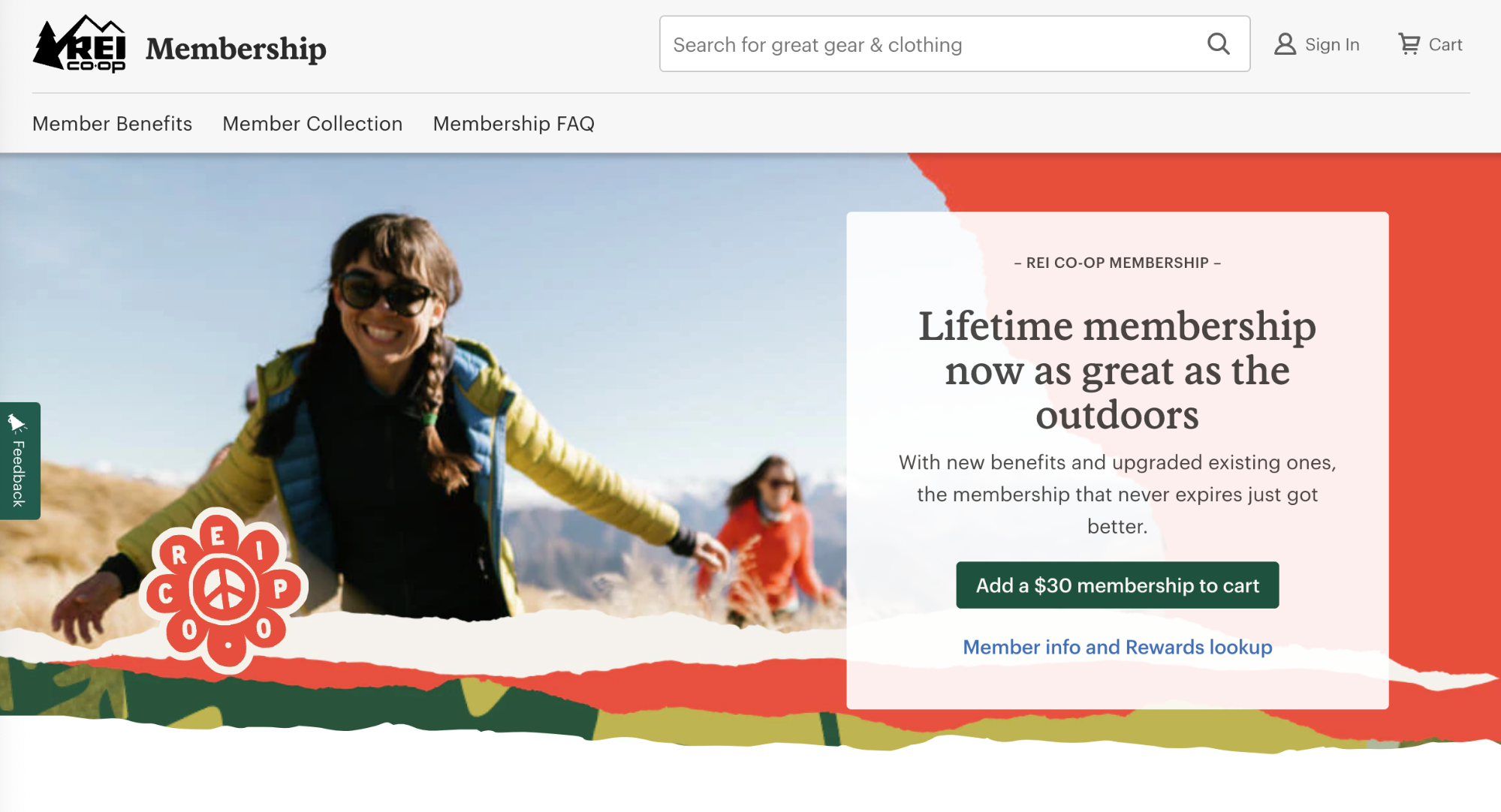
Your loyalty program doesn’t need to be as robust, and you can implement it easily with a Shopify app like Smile.
22. Sell product bundles
A product bundle is a set of two or more related products offered at a discount. You can sell bundles through your store or Shop channel. Selling bundles can increase your average order value, help clear out old inventory, and create more visibility for your products.
Wild One, for example, sells a harness walk kit at discounted prices on its website. Customers receive a leash, harness, and set of poop bags, all of which they can customize by color and size.

💡Get the Bundler app on the Shopify App Store.
23. Offer interactive product visuals
The future of ecommerce marketing goes beyond a static product page. Consider creating interactive experiences like 360-degree views or zoom-in features to help customers get a better look at products.
Of, you could take it a step further and go 3D like high-fashion brand Rebecca Minkoff. The company adopted 3D modeling and augmented reality on its product pages and found that customers were 65% more likely to purchase after viewing products in these interactive experiences.
“At a time when the savvy fashion shopper wants to be able to connect with a brand’s persona, understand the texture and structure of every bag, and envision how they’d feel wearing each piece in a collection, we’re excited to host video and 3D within our Shopify ecommerce site to bring shoppers that much closer to Rebecca Minkoff designs,” says co-founder and CEO Uri Minkoff.
📚 Read: In going 3D, Rebecca Minkoff’s customers became nearly 30% more likely to buy
24. Start video marketing
Video content is showing no signs of slowing down. A 2023 survey from Wyzowl found that 91% of businesses use video marketing, with 87% saying the tactic has helped increase sales.
Ecommerce brands can post many different types of videos:
- Brand videos that show off your product
- Live videos to engage with customers
- Testimonial videos from happy customers
- Educational videos that imparts knowledge on shoppers
For example, Friday Pattern Company creates popular YouTube video content related to sewing. They publish “sew along” sessions that teach viewers how to sew, videos about sewing techniques and hacks, and even a vlog-style series.
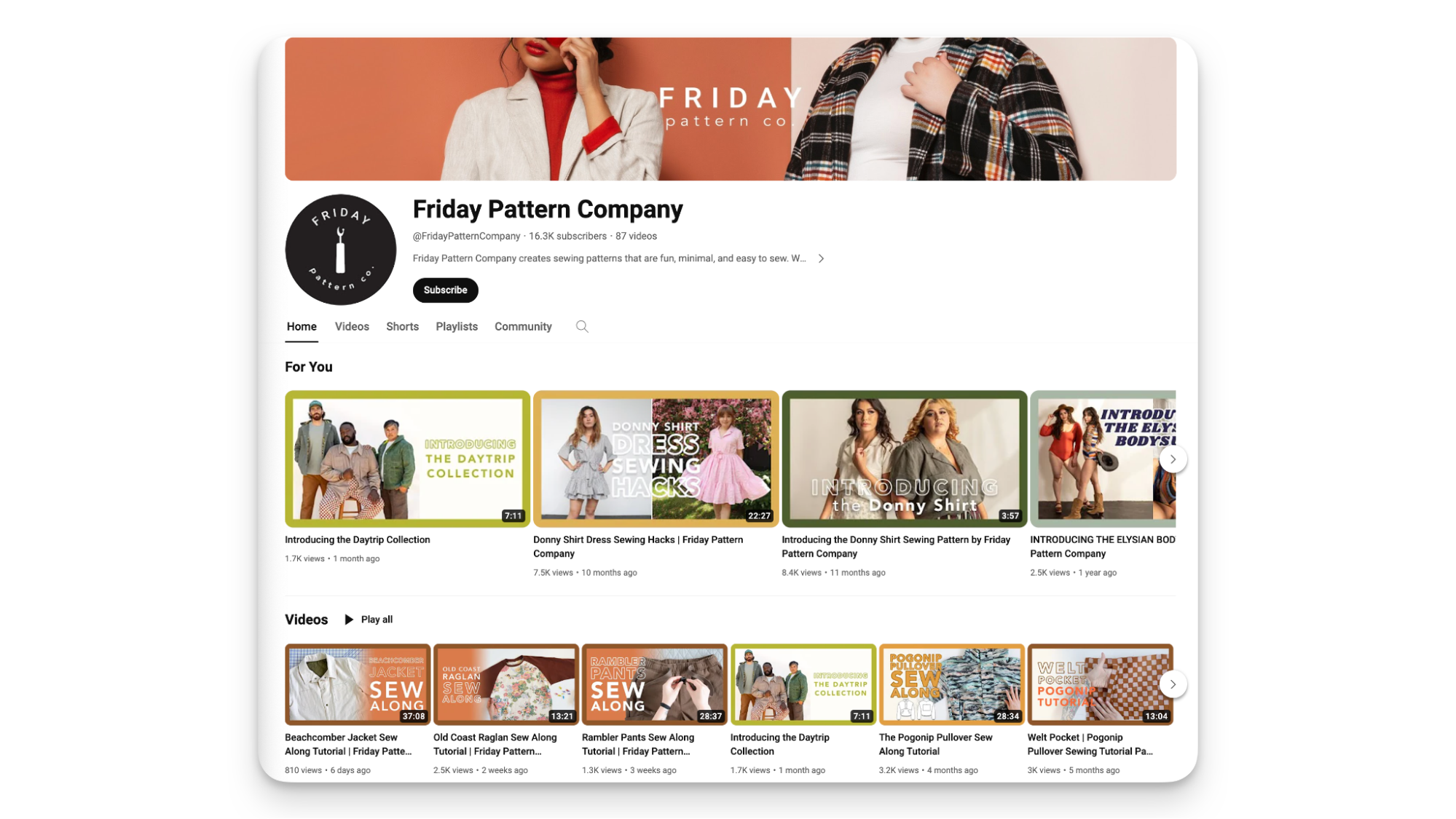
These videos help drive organic traffic to the brand’s ecommerce store and keep them top of mind when followers need sewing patterns.
25. Run an affiliate marketing program
Affiliate programs are rewards-based systems where partners promote your products in exchange for commissions. A customer or creator may advertise your products on their profile, referring their followers to your store. Then they receive a commission on any sales made through their unique link.
Affiliate marketing helps brands and retailers like Healthish launch products, build brand awareness, and sell stuff. When Healthish launched its WB-1 bottle, it worked with Instagram influencers to make content and sell the item.
💡 Learn more: The Pre-Launch Strategies of a Million-Dollar Brand
26. Host webinars or workshops
Webinars and workshops are a great way to engage customers and educate them about your products. You could run in-person product demonstrations that show how your products work. Or, host online webinars that offer tutorials and industry experts to speak on topics related to your brand.
Start marketing your ecommerce store today
There’s no doubt that the right marketing strategy can help reach potential customers, improve average order value, and increase sales. These are all things you definitely want to improve on. By following the ecommerce marketing tips above, you can build a successful store that creates a good customer experience for shoppers and is equally fulfilling and rewarding for you to run.
Ecommerce marketing FAQ
What’s the difference between ecommerce and digital marketing?
Ecommerce is a way to sell and deliver products and services. Digital marketing is how you reach potential and current customers to encourage purchases. When someone goes to your website to buy new shoes, the act of buying and receiving the shoes is ecommerce.
How do you market an ecommerce business?
- Social media marketing
- Search engine optimization
- Affiliate marketing
- Influencer marketing
- Email marketing
- Local marketing
- Loyalty programs
- Conversion rate optimization
- Pay-per-click advertising
- Abandoned cart emails
How can I use social media for ecommerce marketing?
- Create content that showcases your products.
- Run targeted ads to specific groups of people.
- Interact directly with customers via DM and comments.
- Partner with influencers to promote your products.
- Go live and host demos or product how-tos.




لا تعليق